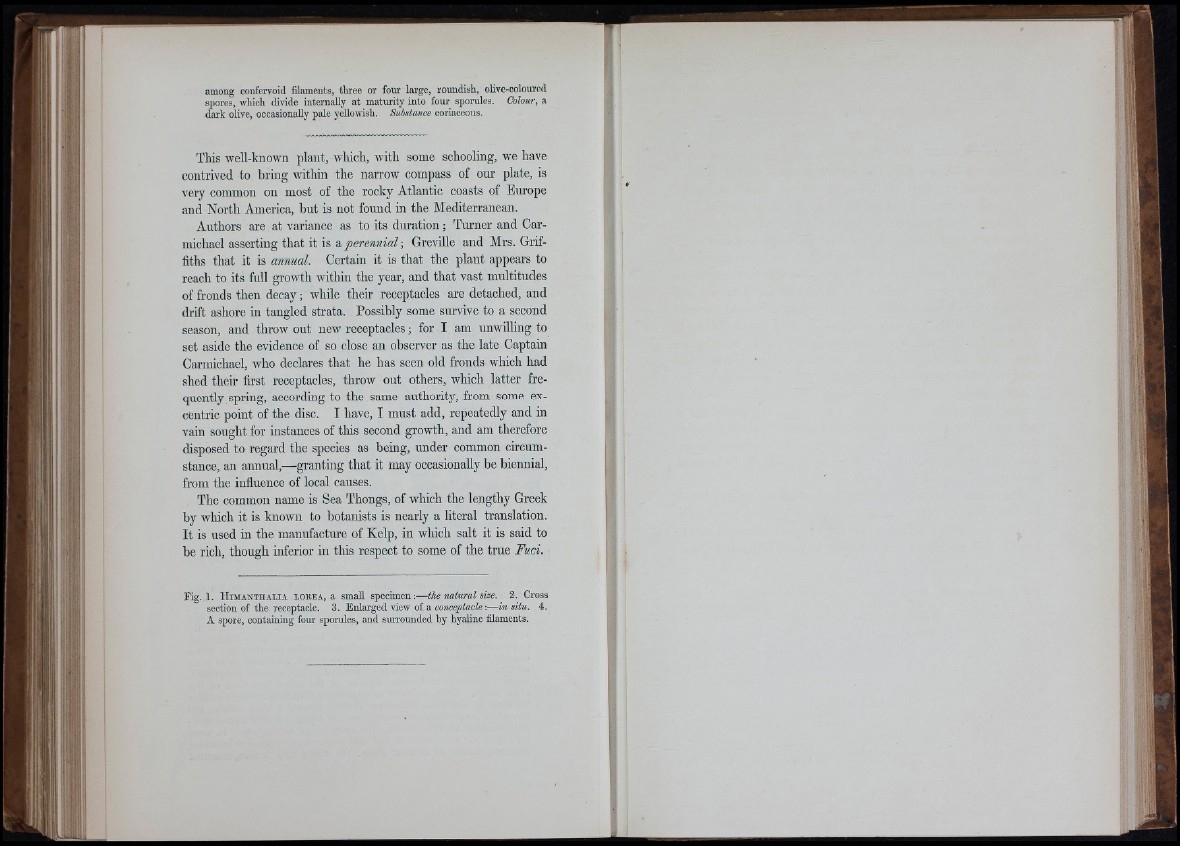
among confervoid filaments, tliree or four large, roundish, olive-coloured
spores, which divide internally at maturity into four sporules. Colour, a
dark olive, occasionally pale yellowish. Substance coriaceous.
This well-known plant, which, with some schooling, we have
contrived to bring witlun the narrow compass of our plate, is
very common on most of the rocky Atlantic coasts of Europe
and North America, but is not found in the Mediterranean.
Authors are at variance as to its duration; Turner and Carmichael
asserting that it is 6. perennial; Greville and Mrs. Griffiths
that it is annual. Certain it is that the plant appears to
reach to its full growth within the year, and that vast multitudes
of fronds then decay; while their receptacles are detached, and
drift ashore in tangled strata. Possibly some survive to a second
season, and throw out new receptacles; for I am unwilling to
set aside the evidence of so close an observer as the late Captain
Carmichael, who declares that he has seen old fronds which had
shed their iu’st receptacles, throw out others, which latter frequently
spring, according to the same authority, from some ex-
centric point of the disc. I have, I must add, repeatedly and in
vain sought for instances of this second growth, and am therefore
disposed to regard the species as being, under common circumstance,
an annual,—granting that it may occasionally be biennial,
from the influence of local causes.
The common name is Sea Thongs, of which the lengthy Greek
by which it is known to botanists is nearly a literal translation.
It is used in the manufacture of Kelp, in which salt it is said to
be rich, though inferior in this respect to some of the true Fuci.
F ig .l . H im a n t h a l i -a l o k e a , a small specimen:— the natural size. 2. Cross
section of the receptacle. 3. Enlarged view of a :— in situ. 4.
A spore, containing four sporules, and surrounded by hyaline filaments.
[ i f